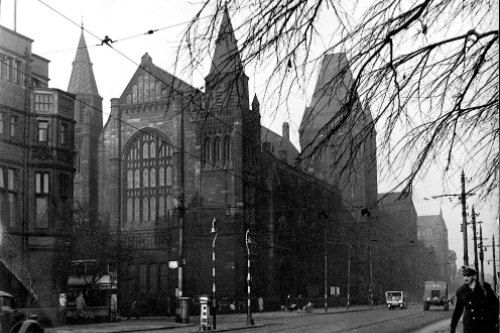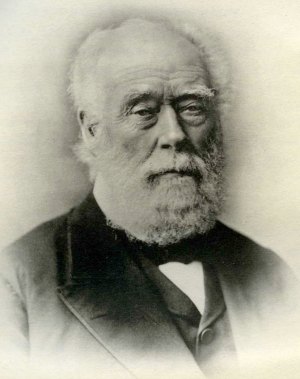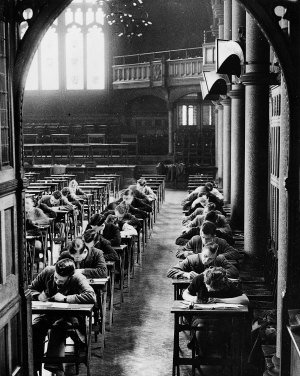The Whitworth Hall
The ceremonial Whitworth Hall was built between 1898 and 1902 to commemorate the Manchester engineer Joseph Whitworth (1803–1887). It was funded by Richard Copley Christie, his lawyer and legatee.

Whitworth's father was a Stockport artisan and his mother died early. When Joseph was aged 11, his father left the children with foster parents in order to train as a minister of religion. After some difficult years Joseph became a mechanic in Manchester. In 1825 he married and went to London, to the engineering works of Henry Maudslay, a national 'nursery' of engineering talent. There he devised a method for making metal planes very accurately; such planes were used in printing presses and were a prerequisite for high-precision engineering.
After working for other leading London engineers, including a contribution to Charles Babbage's pioneering calculating machine, he returned to Manchester and set up a business making machine tools such as lathes. He became known for his measuring devices accurate to 10 nanometres, and especially for his system of standardised screw threads. His mechanical genius was evident at the Great Exhibition of 1851, and he was elected to the Royal Society in 1857. In 1869 he was made a baronet – Sir Joseph Whitworth.

From 1854, at the request of the British government during the Crimean War, Whitworth experimented with new designs for rifles. He demonstrated them in the grounds of his Manchester home, now part of Chancellor's, the University's conference centre in Fallowfield. His innovative guns proved highly profitable - ten years after his death in 1887, his business was united with that of his great rival, Sir William Armstrong of Newcastle.
Whitworth was a good employer, and in later life he created a new home and a 'model estate' in Derbyshire. Most of his wealth (about £900,000, or £55 million in today's money) was left to his three trustees for causes dear to Whitworth, especially education, including a national system of engineering scholarships which he had promised in 1868. In Manchester they provided land for teaching hospitals to be built on Oxford Road and for a new technical college on Sackville Street, the site of Whitworth's early factory. They also created what are now the Whitworth Art Gallery and Whitworth Park; and their several donations to Owens College included the magnificent Whitworth Hall.

The hall, like the rest of the quadrangle, was designed by Alfred Waterhouse, one of Britain's best-known architects, who also designed Manchester Town Hall and the Natural History Museum in London. Building started in 1898 and was completed in 1902 under Paul Waterhouse, Alfred's son. The height and rhythm of the hall echo the similar gothic style of the Museum building, to which it is connected by the archway. Features of note include the towers and the large perpendicular-style window at the south end, the full scale organ, and the wonderful hammer-beam timber roof. The great window includes coats of arms of the 'textile towns', celebrating the University as a 'centre of intelligence' for an industrial region which then dominated the world trade in cotton. Panels inside the hall commemorate the many local citizens who have supported the University from its origins nearly two centuries ago.
